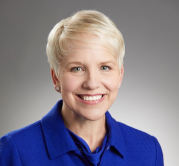The advantage of organizational health during COVID-19

As credit union C-suite executives tackle some of the biggest challenges of their careers, they are often having to rewrite strategic plans and playbooks to conform to environments, economies, and forecasts that seem to shift day by day. While some credit unions are grappling with the uncertainty of our current situation, many leadership teams are taking the initiative to make bold, smart decisions for their membership and communities. It makes me wonder, what is it that enables these teams to manage this crisis with greater advantage?
While credit union size, net worth ratios, interest rate risks, etc. certainly play a part, it’s important to note that there are leadership teams at credit unions under $100M and more than $1B that are managing through this crisis with strong clarity amid the chaos. The success of these credit unions often has more to do with their organizational health than it does with their particular balance sheet.
Organizational health embodies two basic qualities, according to Patrick Lencioni, founder and president of The Table Group and author of 11 books. It must be smart, and it must be healthy. Business fundamentals – like strategy, marketing, finance, and technology – are always going to be vital to the ultimate success of an organization. What blinds many executives, though, is understanding how such efforts (business smarts) are only half the equation.
Bill Anderson, CEO of Mid-Oregon Federal Credit Union ($376M) shares that the second half of the equation is about minimal politics and confusion, high degrees of morale and productivity, and the high retention of good staff. Mid-Oregon Credit Union has utilized the concepts, tools, and disciplines of the Table Group for about 15 years.
“Starting with ‘The 5 Dysfunctions of a Team,’ we have structured ourselves as a highly effective team, successfully achieving positive results, and have continuously improved in all areas. We organized our meetings based upon ‘Death by Meeting,’ which dramatically improved our focus and efficiency as a team. I can now say that our commitment to organizational health has transformed the leadership culture of the credit union, noted Anderson. “This has contributed to strong business results, which consistently outpace our peers. The good health of our organizational leadership has clearly been paying dividends as we navigate the COVID crisis.”
As leaders face the weeks and months ahead, tackling organizational health may feel like another to-do crammed into already jam-packed schedules of Zoom conference calls, board meetings, and decision-making about branch lobby re-openings, PPP processes, staffing, and more. However, the fundamental benefits that accrue from such a focus can alleviate the stressors inherent in the crisis. Here are three ways to commit to becoming a healthier organization now.
- Doing an informal inventory.
This involves first looking at the cohesiveness of your leadership team. Many credit unions define “leadership team” differently. For these purposes, the leadership team connotes C-suite executives – or those reporting directly to the CEO. It is critical for team members to be behaviorally aligned. If not, there is simply no chance of having a healthy organization throughout.
What are the signs to look for relative to a healthy leadership team?
-
- Do you hear team members say, “I messed up,” or share that they made a mistake and recognize that everyone else on the team is vulnerable enough to do the same?
- Do all members of the C-suite feel free being themselves fully?
- Are ideas being shared openly and are members willing to say, “Your idea is better than mine” or “Let us build on that idea.”
- Are people willing to sacrifice their egos for the good of the greater team?
- Is everything being said in front of others, as opposed to being shared behind closed doors (third-party talk/gossip)?
- Is the team having productive conflict regularly? Or is the team avoiding discussion and debate?
- Is everyone meeting in the morning to go over the day’s priorities and get clear on current roadblocks?
- Are all meetings being run effectively and efficiently? Does everyone know what has been agreed upon after a meeting?
- Is accountability present?
- Is communication flowing?
These are just some of the examples. Sometimes it will be clear that this is happening most of the time. Other times, half of the team will feel positive about team behaviors while the other half has a different view. That is exactly why taking an informal inventory can be telling. For teams to be functional, everyone must be united.
- Begin by being more vulnerable yourself, showcasing empathy, and notice what happens.
Is it welcomed? Does it help encourage those around you to do the same? During times of quarantine, crisis, and even after, leaders have a unique opportunity to connect with their team more personally and remind them why their job matters. Effective leaders are vulnerable leaders. By being willing to lead by example, leaders who set aside their own ego, share from their heart, and demonstrate empathy make it safe for teammates to do the same. This is how trust is built over time. It allows team members to own their mistakes, fears, and ideas and speak freely, instead of trying to pretend to be someone they are not. This builds closeness between the group and brings about better results. Grounded, humble CEOs with self-awareness can also take critical feedback on ideas.
Similarly, other members, such as a Chief Credit Officer or Chief Lending Officer, can hear and incorporate input and ideas from the entire team, just like other members of the C-suite. For example, relative to provisioning, interest rate risks, and digital projects to support SBA or a new product, they can then respect their colleagues’ expertise, as they ask questions, get educated, and make recommendations.
- Rally around one priority.
What is your top priority for the next three to nine months (12 months tops)? Right now, many leaders are being pulled in so many directions (as we often say, “fighting fires”). It can be challenging to zero in on the top focus. Everyone in the C-suite should agree upon the main priority. This then can become the rallying cry that is shared regularly with the Board and staff to help build momentum and drive.
For those with merger considerations
Merger considerations will prove to be another opportunity for some leadership teams as this crisis continues. It is one thing to look at the numbers, including asset size, good will, branches, charters, and plans for Board discussions. It is entirely another to be transparent and utilize the team members’ strengths to their fullest benefit. As some of you self-reflect on these organizational health techniques in the weeks ahead, be sure to ask yourself whether all members of the C-suite are providing feedback on the potential combined balance sheet, credit risks, cultural fit, technological issues, brand matters, and member considerations. Having them sign NDAs sooner than later and laying the groundwork for trust and strong organizational health will pay dividends of a new kind as you move forward.
We are amid a time like no other. What credit unions will face over the course of the ensuing weeks and months and year(s) ahead will require organizations to be at their healthiest. Are you ready?





